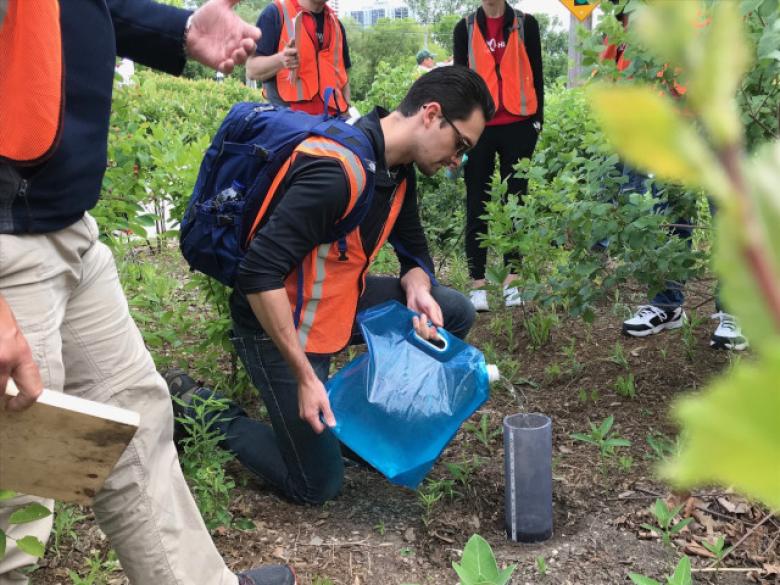
Citizen scientists assess the effects of design, climate and environment on bioswale function
Urban areas are prone to the effects of extreme rainfall events due to their largely impermeable surface cover. Intense rainfall hits tarmac or paving slabs and runs straight to drainage channels, reducing infiltration and increasing pollution downstream.
Bioswales are artificial urban wetlands placed along streets and urban areas to act as infiltration basins. Built using wetland vegetation and porous soils, they replace impermeable surfaces with natural cover and slow the movement of water allowing it to be filtered and stored.
In six cities across North America, 71 bioswales were studied to assess how their design, the environment and the climate affected their functionality. Citizen scientists measured infiltration rate, classified soil type, mapped bioswale features and installed real-time soil moisture sensors on site. The results of the study showed that hydrological functionality of bioswales was strongly influenced by their management, age, size and initial soil type.

